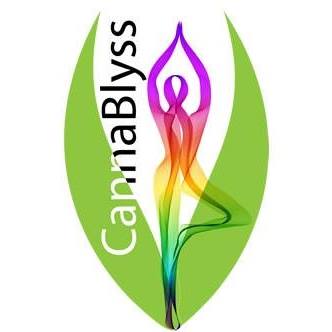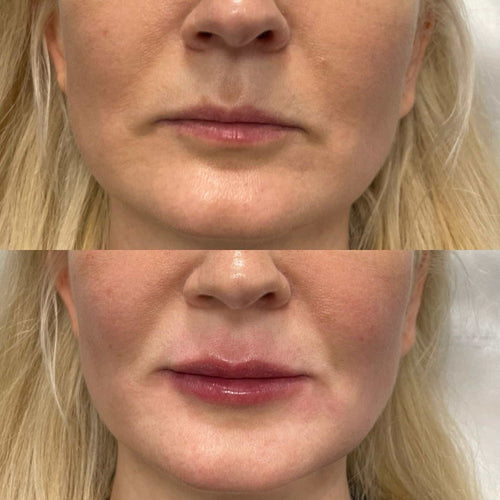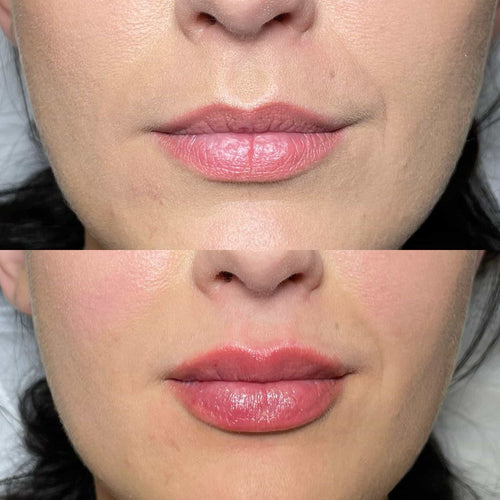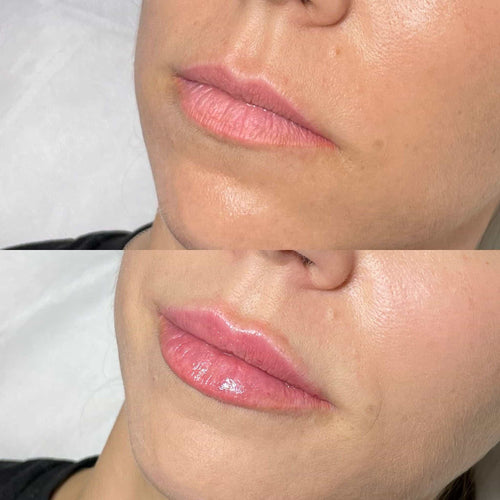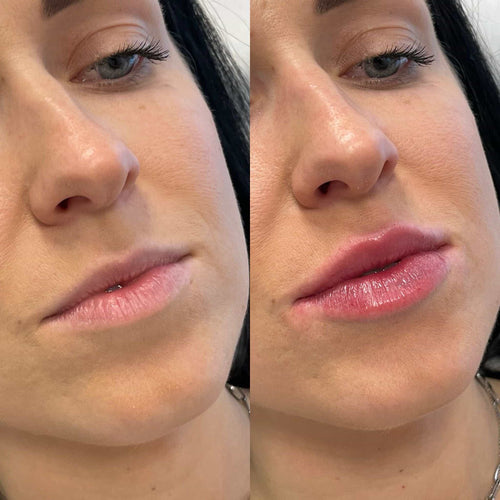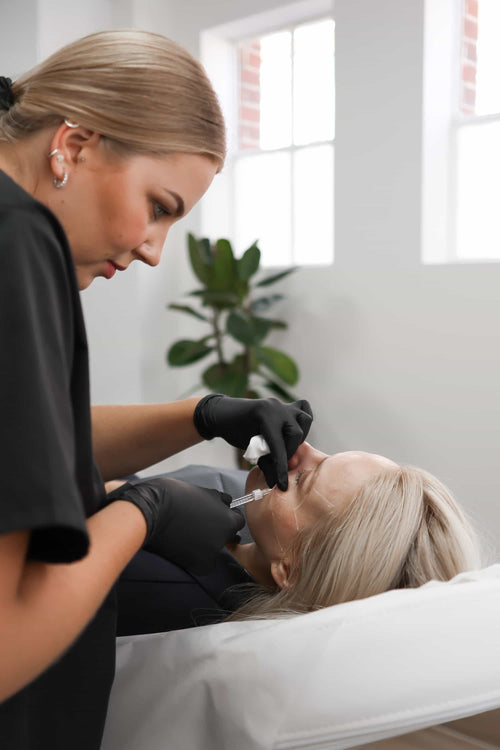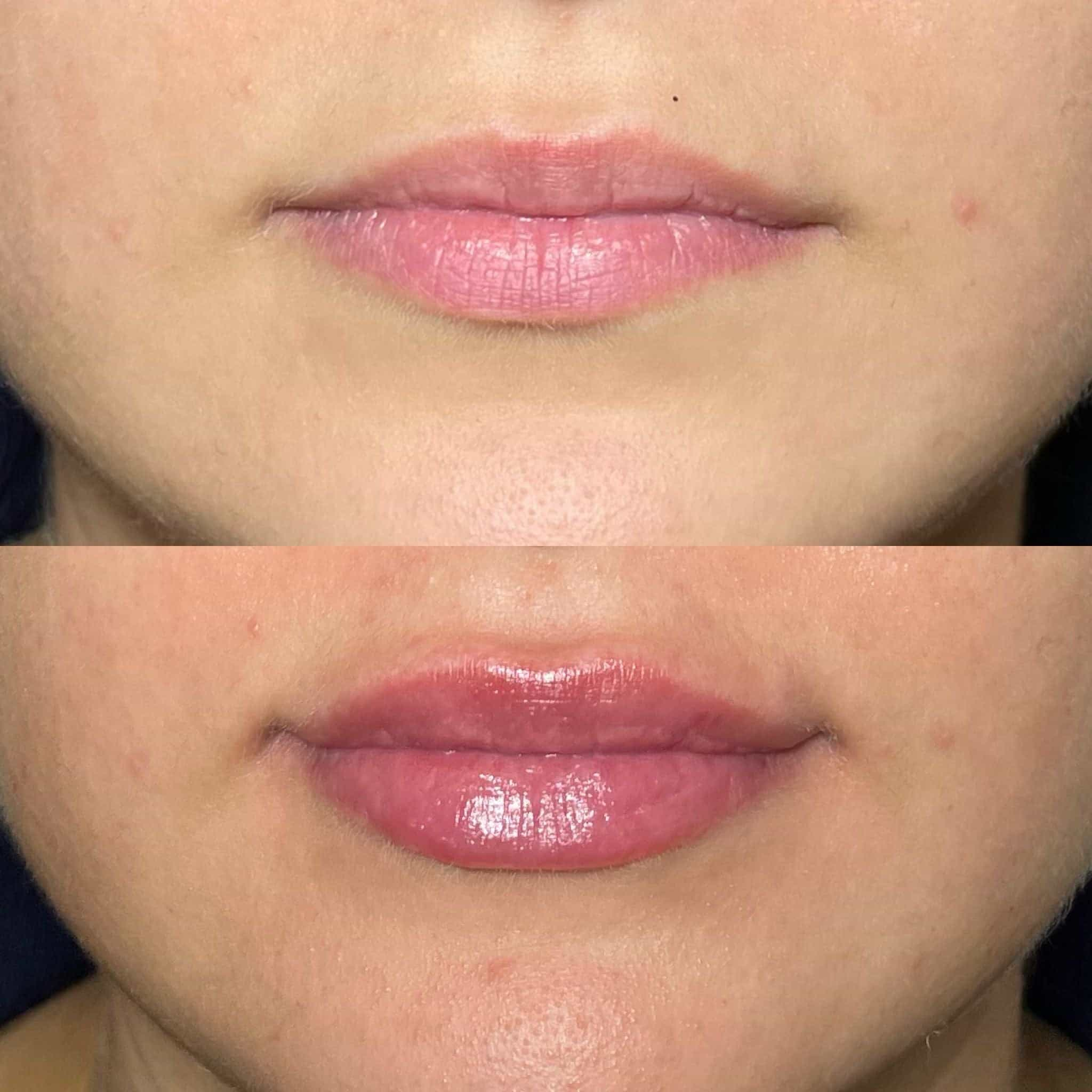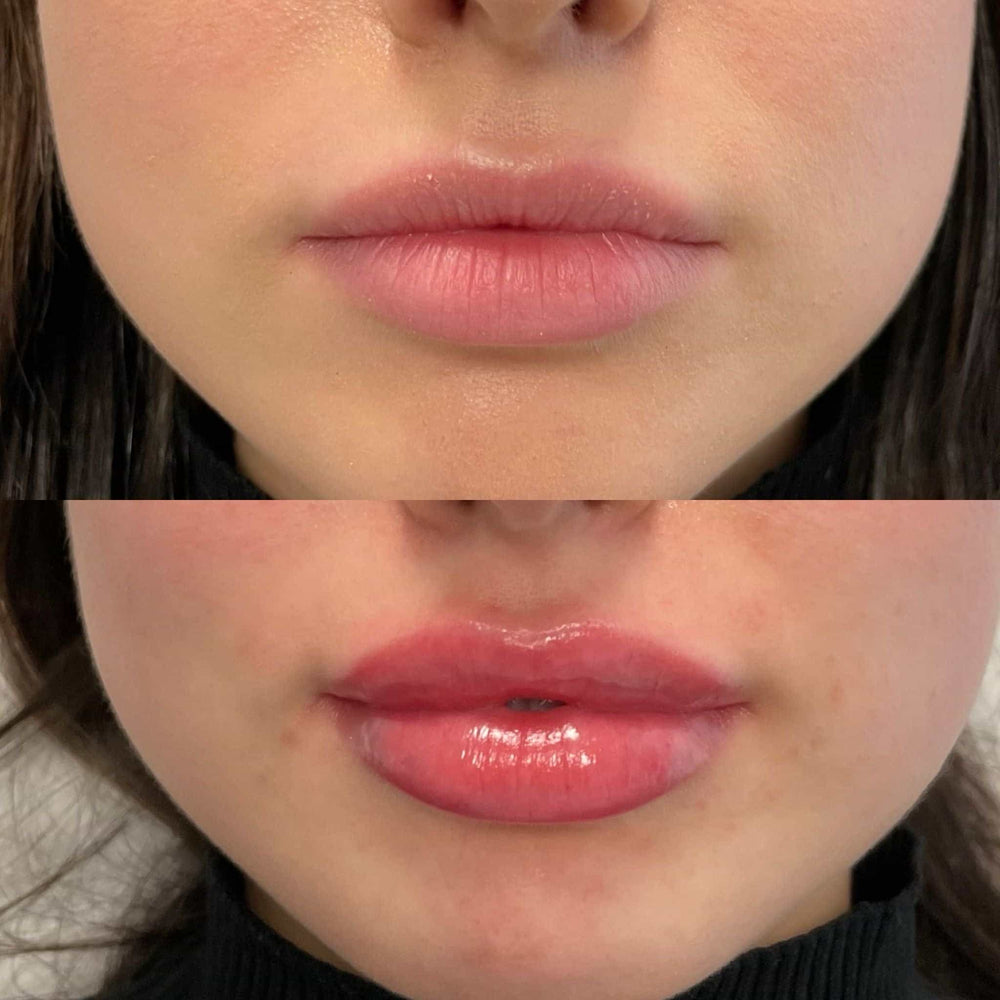How Long Does The Swelling From Lip Filler Last
Arrange a Dermal Filler Consultation with Dr. Laura Geige Today
Duration of Swelling from Lip Fillers
Average Duration of Swelling
The duration of swelling after lip fillers can vary depending on several factors such as the type of filler used, the individual’s overall health, and the extent of the procedure.
In general, swelling after lip fillers is most pronounced in the first 24 to 48 hours following the treatment. During this time, patients may experience noticeable bruising, redness, and swelling around the injection site.
On average, the swelling typically starts to subside within 3 to 5 days after the procedure. However, some patients may still experience mild swelling and discomfort for up to a week after treatment.
The peak swelling usually occurs around 2-3 days after the procedure, and it can take anywhere from 7-14 days for the swelling to fully resolve.
It’s essential to note that some patients may experience more significant swelling than others, especially if they have a history of bruising or bleeding disorders.
The type of filler used can also impact the duration and severity of swelling. For example, hyaluronic acid fillers like Juvederm or Restylane tend to cause less swelling compared to calcium hydroxylapatite fillers like Radiesse.
Additionally, patients who smoke may experience increased swelling due to impaired blood circulation, while those with a higher body mass index (BMI) may also be more prone to swelling.
It’s also worth noting that some swelling can be caused by the initial reaction to the filler material, rather than the physical procedure itself. In this case, the swelling is usually temporary and subsides on its own within a few days.
To minimize swelling after lip fillers, patients are often advised to avoid strenuous activities, cold compresses, and heavy lifting or bending in the first 24 hours after treatment. Topical creams and ointments may also be prescribed to reduce swelling and promote healing.
In most cases, the duration of swelling from lip fillers is short-term and can be managed with proper care and aftercare instructions provided by a qualified healthcare professional or dermatologist.
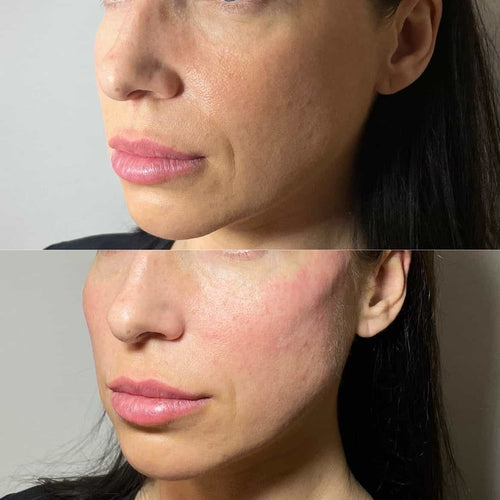
The duration of swelling after lip fillers can vary depending on several factors, including the type of filler used, the individual’s metabolism, and the skill level of the practitioner administering the treatment.
In general, swelling after lip fillers is most pronounced in the first 24-48 hours following treatment. During this time, the body’s natural inflammatory response to the foreign substance causes swelling, which can be uncomfortable but temporary.
On average, the swelling from lip fillers typically peaks around 12-24 hours after treatment and starts to subside within 2-3 days. However, some people may experience swelling that lasts longer, up to a week or more in some cases.
Swelling can also be influenced by factors such as the size of the filler injection, the location on the lip, and individual tolerance to the substance.
In some instances, the body’s natural response to the filler may cause swelling that is more pronounced in one area than another. For example, if the filler is injected too deeply or at an angle, it can cause uneven swelling.
It is essential to note that while swelling from lip fillers is generally temporary, it can be uncomfortable and affect daily activities. To minimize discomfort, patients are often advised to avoid strenuous activities, such as exercise or heavy lifting, for a few days after treatment.
In addition to avoiding physical activity, there are other things patients can do to alleviate swelling and promote healing. These include applying cold compresses to the area, taking anti-inflammatory medications as directed, and staying hydrated by drinking plenty of water.
The type of filler used can also impact the duration of swelling. For example, hyaluronic acid fillers like Restylane or Juvederm tend to cause less inflammation and shorter-lasting swelling compared to calcium-based fillers like Radiesse.
It’s crucial for patients to follow their practitioner’s instructions regarding aftercare and follow-up appointments to ensure proper healing and minimize the risk of complications.
Swelling can also be an indication that the body is responding to the filler in a normal way. In most cases, swelling will subside on its own within a few days, and the lip will return to its natural shape.
However, if swelling persists or becomes severe, it may be a sign of an adverse reaction or other complications. Patients should seek medical attention immediately if they experience any signs of infection, such as increased redness, warmth, or pus.
In rare cases, lip fillers can cause more significant and prolonged swelling that requires surgical intervention to resolve. This is typically a result of improper technique, allergic reactions, or other complications.
Typically, swelling after lip fillers can last anywhere from 17 days.
The duration of swelling after lip fillers can vary from person to person, but generally, it can last anywhere from 17 days.
It’s essential to note that this timeframe may be shorter or longer depending on individual factors such as the type and quantity of filler used, the skill level of the practitioner, and personal healing processes.
A common misconception is that swelling from lip fillers lasts forever, but in reality, it typically peaks within a few days after treatment and gradually subsides over time.
- Day 1-2: Immediately following the procedure, patients may experience significant bruising, swelling, and redness around the lips. This is usually due to the body’s natural response to trauma or injury.
- Days 3-5: As the body starts to heal, the swelling begins to decrease, but the lips may still appear slightly puffy and tender.
- Days 6-10: The swelling continues to subside, and patients typically start to see noticeable improvements in the shape and appearance of their lips.
- Days 11-14: At this stage, most of the initial swelling should have resolved, leaving behind only minor residual redness or puffiness.
- After Day 14: In most cases, the final result is achieved around this time. However, it may take up to 17 days for the filler to fully integrate into the surrounding tissue and for any remaining inflammation to resolve completely.
The duration of swelling can also be influenced by factors such as:
- The amount and type of filler used: More filler or using certain types, like hyaluronic acid, may lead to longer swelling times.
- Practitioner experience and technique: An experienced practitioner will minimize complications and reduce swelling duration.
- Individual healing processes: People recover at different rates, and some may experience prolonged or shorter swelling periods.
- Post-care instructions: Adhering to the recommended recovery protocol can significantly impact the speed and extent of swelling resolution.
It’s essential for individuals considering lip fillers to consult with a qualified practitioner and discuss their specific expectations, potential risks, and realistic outcomes, including any expected duration of swelling after treatment.
A study by the American Society of Plastic Surgeons found that the majority of patients experienced some level of swelling for 25 days.
The duration of swelling from lip fillers can vary depending on several factors, including the individual’s overall health, the type of filler used, and the technique employed by the practitioner.
Generally, it is common to experience some level of swelling after getting lip fillers, which can last anywhere from a few days to several weeks.
A study by the American Society of Plastic Surgeons found that the majority of patients experienced some level of swelling for 25 days. This suggests that the initial swelling phase can last up to a month, although this may vary from person to person.
Swelling is usually more pronounced in the first few days after treatment and gradually subsides over time. In some cases, it may take several weeks for the swelling to fully resolve.
The type of filler used can also impact the duration of swelling. For example, hyaluronic acid fillers like Juvederm or Restylane tend to cause less swelling than permanent fillers like silicone or calcium hydroxylapatite.
In general, it’s common to experience some level of bruising and swelling after lip filler treatment, especially in the first 24-48 hours. This is usually due to the body’s natural inflammatory response to the new tissue.
As the body starts to break down the filler material, the swelling typically begins to decrease. However, it’s not uncommon for some residual swelling to persist for several weeks after treatment.
It’s essential to note that individual results may vary greatly, and some people may experience more or less swelling than others. Factors such as age, skin type, and overall health can also influence the severity of swelling.
In most cases, the swelling from lip fillers is temporary and resolves on its own within a few weeks. However, in rare cases, it’s possible to experience persistent or severe swelling, which may require further medical attention.
Practitioners typically recommend avoiding strenuous activities, such as heavy exercise or facial expressions, for several days after treatment to minimize the risk of exacerbating swelling.
It’s also essential to follow post-treatment instructions carefully, including applying cold compresses and taking pain medication as directed, to help manage discomfort and reduce the risk of complications.
The duration of swelling after lip fillers can vary depending on several factors, including the type of filler used, the individual’s overall health, and the skill level of the practitioner administering the treatment.
On average, most people experience some degree of swelling after lip fillers, which typically peaks within 24 to 48 hours after injection and subsides within 7-10 days.
Here are some general guidelines on what to expect in terms of swelling duration for different types of lip filler products:
- Hyaluronic acid fillers (e.g. Juvederm, Restylane): Swelling typically peaks within 24-48 hours and subsides within 5-7 days.
- Radiesse and Collagen-based fillers: Swelling can last a bit longer, peaking within 36-72 hours and subsiding within 7-10 days.
- Calcium hydroxylapatite fillers (e.g. Radiesse): Swelling may be more pronounced and can last up to 2 weeks after treatment.
It’s essential to note that some people may experience more significant swelling than others, and in rare cases, it can persist for several weeks or even months after treatment.
A key factor influencing the duration of swelling is the technique used by the practitioner. For example:
- Using a cannula: This minimally invasive technique involves inserting a thin needle under the skin to deliver the filler, which can lead to less inflammation and shorter-lasting swelling.
- Injecting into the deeper layers of the tissue: Fillers injected too deeply can cause more significant swelling as the body reacts to the foreign material.
To minimize swelling and reduce recovery time, it’s essential to:
- Follow post-treatment instructions carefully: This includes avoiding strenuous activities, keeping the treated area clean and dry, and taking any prescribed medications to help manage inflammation.
- Maintain good skin care habits: Keeping the skin well-hydrated and using gentle skincare products can aid in the healing process and reduce the appearance of swelling.
In most cases, the initial swelling will subside within a week or two, leaving behind smooth, plump lips that look and feel great. However, it’s crucial to be patient and allow your body time to heal and adjust to the new filler material.
Factors Influencing Swelling Duration
The duration of swelling after lip fillers can vary from person to person, but on average, it can last anywhere from a few days to several weeks.
Immediately after treatment, some swelling and redness are normal due to the injection process itself and the body’s natural reaction to the new tissue.
The most significant amount of swelling typically occurs in the first 24-48 hours following the procedure, with the majority of patients experiencing mild to moderate swelling during this time.
Factors influencing swelling duration include individual tolerance to the filler material, the size and location of the injections, and overall health conditions such as allergies or skin conditions.
Smaller fillers injected into smaller areas tend to cause less swelling compared to larger volumes or more extensive areas treated.
Additionally, patients with a history of bleeding disorders or those taking anticoagulant medications may experience prolonged swelling due to an increased risk of bruising and hematoma formation.
Smokers are also at higher risk for developing significant swelling as the filler material can cause vascular constriction leading to delayed absorption.
In contrast, individuals with a lower risk profile, such as non-smokers without any pre-existing medical conditions, typically experience shorter-term swelling that resolves within 1-2 weeks post-procedure.
It’s essential for patients to follow their practitioner’s post-care instructions, including avoiding strenuous activities and applying cold compresses to minimize the appearance of swelling.
The final swelling duration can also depend on the type of filler material used. Some fillers, like hyaluronic acid-based products (e.g., Juvederm, Restylane), tend to cause less prolonged inflammation compared to other materials like calcium hydroxylapatite or poly-L-lactic acid.
During this time, patients should be patient and remember that the swelling will subside as their body absorbs the filler material. Proper wound care and avoiding rubbing or touching the treated area can also contribute to a faster resolution of swelling.
Some cases of excessive or persistent swelling may require medical attention from a qualified practitioner to address any potential complications, such as infection or delayed healing.
It’s crucial for individuals considering lip filler treatments to discuss their concerns and expectations with their practitioner beforehand, including questions about the expected duration of swelling.
This informed discussion will help establish realistic expectations and allow patients to make an educated decision regarding their cosmetic treatment.
Ultimately, understanding the factors influencing swelling duration is vital in ensuring that patients have a smooth recovery process after lip filler treatments.
During the procedure to administer lip fillers, a temporary swelling or bruising may occur as a result of the injection of the filler material.
This swelling can range from mild to moderate and usually resolves on its own within a few days after the treatment.
The duration of swelling from lip fillers can vary depending on individual factors such as the type and amount of filler used, the area being treated, and overall health of the patient.
For most people, the swelling caused by lip fillers subsides within 2-3 days after treatment. However, in some cases, it may take up to a week for the swelling to completely disappear.
It’s essential to note that the severity of swelling can also depend on the location of the injection site. Swelling at the injection site usually resolves faster than swelling near the lip border.
General guidelines for swelling resolution from common lip fillers are as follows:
– For Juvederm and Restylane, the swelling typically subsides within 2-3 days.
– For Radiesse, the swelling may take up to 5-7 days to resolve.
– For collagen fillers, the swelling can take longer to resolve, often requiring 7-10 days or more.
It’s also worth noting that some people may experience a phenomenon called ‘masking’, where they might not notice any initial swelling due to the numbing effects of local anesthetics. However, as the swelling resolves and the lip returns to its normal shape, any temporary irregularities can become apparent.
Fortunately, in most cases, the duration of swelling from lip fillers is short-lived, and the treated area returns to its pre-treatment state within a week or two. It’s crucial to follow post-procedure care instructions provided by your healthcare professional to minimize the risk of complications and ensure optimal results.
Additionally, maintaining good oral hygiene, avoiding strenuous activities that can cause swelling, and applying ice packs to the treated area may also help reduce swelling and alleviate discomfort.
In rare cases, if the swelling is more severe or prolonged, it’s recommended to consult with a medical professional for further evaluation and guidance. They may need to adjust the treatment plan or provide additional advice on managing post-procedure side effects.
The type and amount of filler material used can impact the duration of swelling.
The duration of swelling from lip fillers can vary depending on several factors, including the type and amount of filler material used.
In general, most people experience some level of swelling after receiving lip fillers, which typically resolves on its own within a few days to a week.
The type of filler material used is a significant factor in determining the duration of swelling. For example, Hyaluronic acid fillers, such as Juvederm and Restylane, tend to cause less swelling than other types of fillers.
Calcium hydroxylapatite, which is used in fillers like Radiesse, can also cause some inflammation, but the amount of swelling is usually mild and short-lived.
The polylactic acid filler, Sculptra, typically causes minimal to no swelling at all.
The amount of filler material used is also a significant factor. Larger amounts of filler material tend to cause more swelling than smaller amounts.
Microfillers, which are tiny particles of hyaluronic acid or other substances, can cause more localized swelling and inflammation compared to larger fillers.
The duration of swelling from lip fillers can also be influenced by individual factors, such as age, skin type, and overall health.
For most people, the swelling from lip fillers will start to resolve within 2-3 days after treatment. However, some people may experience more prolonged swelling that lasts for up to 7-10 days or even longer.
Swelling can also be exacerbated by certain lifestyle factors, such as smoking, which can lead to increased inflammation and prolong the healing process.
In some cases, more severe swelling may require medical attention. If you experience significant swelling, redness, or bruising after lip filler treatment, it’s essential to contact your doctor or dermatologist for proper evaluation and care.
It’s worth noting that while swelling is a temporary side effect of lip fillers, other complications can occur. It’s crucial to choose a qualified and experienced healthcare professional to minimize the risk of adverse reactions.
Pre-treatment preparation, including taking antibiotics or using anti-inflammatory medications, may also help reduce swelling and promote faster recovery.
In summary, while the duration of swelling from lip fillers can vary, it’s generally mild and temporary. By understanding the factors that contribute to swelling and taking steps to minimize them, you can enjoy optimal results with your lip filler treatment.
A study published in the Journal of Plastic, Reconstructive & Aesthetic Surgery found that patients who received larger volumes of filler experienced prolonged swelling (up to 10 days).
The duration of swelling from **Lip Fillers** can vary depending on several factors, including the type and amount of filler used, individual tolerance, and post-procedure aftercare.
According to various studies, the swelling caused by lip fillers is typically most noticeable in the first 24-48 hours after treatment. However, some patients may experience persistent or prolonged swelling that can last for up to 10 days.
A study published in the Journal of Plastic, Reconstructive & Aesthetic Surgery found that patients who received larger volumes of filler experienced more pronounced and prolonged swelling compared to those who received smaller volumes.
The authors suggested that this may be due to increased blood flow and inflammation as a result of the larger amount of filler material injected into the lip tissue.
It is essential to note that swelling can also be influenced by various factors, including:
- *_Type of Filler_*: Different types of fillers have varying levels of inflammatory reactions. For example, some studies suggest that Calcium Hydroxylapatite (Radiesse) may cause more pronounced swelling compared to hyaluronic acid (Restylane or Juvederm).
- *_Amount of Filler_*: As mentioned earlier, patients who receive larger volumes of filler tend to experience more swelling.
- *_Post-Procedure Care_*: Poorly managed post-procedure care can lead to increased inflammation and prolonged swelling. This includes factors such as:
- *_Lack of Ice Packs_*: Applying ice packs to the treated area can help reduce swelling. However, if this is not done post-procedure, it may worsen swelling.
- *_Smoking and Drinking*_
- *_Individual Tolerance*_
It’s also worth noting that while some degree of swelling is normal after lip filler treatment, excessive or persistent swelling can be a sign of an adverse reaction to the filler. In such cases, patients should seek immediate medical attention.
In general, most patients can expect the following timeline for swelling after lip filler treatment:
- *_0-24 hours_*: Swelling is usually most pronounced during this period, and it may be tender to the touch.
- *_2-5 days_*: Swelling begins to subside, but may still be noticeable in some patients.
- *_7-10 days_*: Swelling has largely resolved for most patients, although some may experience lingering mild swelling.
It is crucial to follow the post-procedure instructions provided by your doctor or aesthetic nurse and attend follow-up appointments to ensure proper healing and minimize the risk of complications.
With proper care and attention, the swelling from lip fillers should subside within a few days, revealing smooth, natural-looking results that can enhance your confidence and overall appearance.
The duration of swelling from lip fillers can vary depending on several factors, including the type and quantity of filler used, individual response to treatment, and aftercare.
On average, patients can expect some degree of swelling at the injection site for several days following treatment.
- Swelling usually peaks within 24-48 hours after treatment
- Typically starts to subside within 3-5 days
- Clinical swelling can last up to a week or more in some cases
- Symptomatic swelling, which affects overall comfort and mobility of the face, usually resolves within 2-4 weeks
Factors that influence the duration of swelling from lip fillers include:
- Filler type: Hyaluronic acid fillers tend to cause more temporary inflammation, resulting in shorter-lasting swelling.
- Filler concentration: Higher concentrations can lead to increased inflammation and longer-lasting swelling.
- Injection technique: Inexperienced injector or improper technique may lead to more severe inflammation and prolonged swelling.
- Individual response: People’s bodies respond differently to lip fillers, which can affect the duration of swelling.
- Aftercare: Adhering to post-treatment instructions and taking care to reduce bruising and inflammation can help minimize swelling duration.
It is essential for patients to follow their healthcare professional’s aftercare instructions carefully, including applying ice packs, elevating the treated area, and avoiding strenuous activities that may exacerbate swelling.
Some patients may experience more severe or prolonged swelling due to complications such as:
- Bleeding or hematoma
- Bruising
- Infection
- Filler granuloma (a reaction from the filler itself)
If you experience persistent, severe, or unusual swelling after lip fillers, it is crucial to contact your healthcare professional for guidance and treatment.
When Can Swelling Be Expected to Subside?
Symptoms Tapering Off
The duration of swelling after lip filler injection can vary from person to person, but generally, it can take anywhere from a few days to several weeks for the swelling to subside.
Typically, the most significant amount of swelling occurs within the first 24-48 hours after treatment, with some people experiencing more pronounced swelling than others.
During this time, it’s essential to follow the post-injection instructions provided by your doctor or dentist to minimize discomfort and promote healing.
Swelling can be caused by the body’s natural reaction to the filler material, as well as the injection process itself.
In some cases, swelling may persist for a longer period, often due to factors such as:
– Overfilling with filler material
– Using a filler that is not compatible with your skin type
– Having a pre-existing medical condition, such as hypertension or lymphedema
– Taking certain medications, like blood thinners or painkillers
However, if you follow proper post-injection care and attend scheduled follow-up appointments with your doctor or dentist, the swelling should gradually decrease.
Here’s a general outline of what to expect during different stages of swelling:
– 0-2 days: Swelling is usually most pronounced during this period, and it may be accompanied by bruising, redness, and soreness.
– 2-5 days: The swelling starts to subside, but you may still experience some discomfort, mild bruising, and sensitivity to the touch.
– 5-7 days: Swelling becomes less noticeable, and your lips should start to feel more comfortable.
– 1-2 weeks: Most of the swelling has subsided, leaving you with a smooth, even appearance.
– 2-4 weeks: The final results of the filler injection become apparent, and your lips should appear fuller, smoother, and more defined.
It’s essential to note that some residual swelling may persist for several months after treatment, but this is usually minimal and temporary.
In rare cases, swelling can be a sign of an adverse reaction or infection, so it’s crucial to follow up with your doctor or dentist if you experience any unusual symptoms, such as increased redness, pain, or swelling that persists or worsens over time.
“The duration of swelling after lip filler injections can vary depending on several factors, such as the type and brand of the filler used, the location of the injection, and individual healing processes.
Typically, most people experience some level of **swelling**, also known as edema, after lip filler injections. This is due to the body’s natural reaction to the foreign material in the skin. The swelling can range from mild to severe and may last anywhere from a few days to several weeks.
Generally, you can expect the swelling to subside within **2-5 days** after the procedure. However, it’s essential to note that some people may experience more significant swelling that takes longer to resolve.
The rate at which swelling subsides also depends on the type of filler used. For example:
– Calcium Hydroxylapatite (Radiesse) and Hyaluronic Acid (Juvederm, Restylane): These fillers tend to cause less intense **swelling** compared to other types. Mild swelling can be expected for 2-3 days, while more significant swelling may take up to 5-7 days to resolve.
– Collagen (Sculptra): As this filler is designed to stimulate collagen production, it can lead to more **swelling**, especially during the initial healing phase. Swelling can last for up to 7-14 days after treatment.
Factors that influence swelling duration include:
– The amount of filler used: Excessive amounts can cause more severe **swelling** and longer recovery times.
– The injection technique
– Skin sensitivity
– Individual healing processes
It’s crucial to follow the post-injection care instructions provided by your healthcare provider or aesthetic professional to minimize **swelling** and ensure a smooth recovery. This may include applying **cold compresses**, elevating the treated area, and avoiding strenuous activities.
In some cases, bruising, which is distinct from swelling, can also occur after lip filler injections. While this can be more noticeable than **swelling**, it typically resolves on its own within a few days to a week.
Keep in mind that everyone’s body reacts differently to lip filler procedures. To better understand your individual healing process and minimize the duration of **swelling**, consult with an experienced healthcare professional or aesthetic specialist for personalized guidance.
With proper care and patience, most people can expect their swelling to subside within 1-2 weeks after lip filler injections. In some cases, it may take up to 6 weeks for the final results to be fully visible.
As the body absorbs the filler material, swelling will gradually decrease.
“When Can Swelling Be Expected to Subside?”
The swelling experienced after receiving lip fillers typically follows a predictable pattern, allowing individuals to gauge when it’s likely to subside.
During the initial days following treatment, swelling can peak within 3-5 days and may take up to 10-14 days to reach its maximum extent.
- After the swelling reaches its peak, the body begins to absorb the filler material.
- This absorption process starts immediately after treatment but is most pronounced in the first few weeks following.
- The amount of time it takes for the swelling to subside varies from person to person, depending on factors such as:
- Individual metabolism and tissue healing speed
- Dose and type of filler used
- Location of filler injection (e.g., lips, chin, cheeks)
- Generally, mild to moderate swelling can take around 2-4 weeks to resolve, while more significant swelling may take up to 6-8 weeks.
Other factors that can influence the rate at which swelling subsides include:
- Physical activity and posture
- Hydration levels and overall health
- The presence of any underlying medical conditions or allergies
A well-experienced practitioner will be able to provide personalized guidance on managing swelling post-lip filler treatment, including tips such as:
- Applying ice packs to reduce inflammation
- Sitting up straight and avoiding excessive lying down
- Staying hydrated with plenty of water and avoiding salty foods
It’s also common for some residual swelling to remain after the initial healing process has begun, especially if the filler material hasn’t been fully absorbed.
- This subtle lingering effect can be addressed during subsequent touch-ups or maintenance treatments.
Overall, while it may take several weeks for swelling to completely subside, the majority of individuals experience a significant reduction in swelling within 4-6 weeks after receiving lip fillers.
A report by the FDA notes that most patients can return to their normal activities within 35 days, but may still experience some residual swelling.
The duration of swelling after lip filler injection can vary depending on several factors, including the type and quality of the filler used, individual patient response, and the technique employed by the practitioner.
Generally, most patients experience some degree of swelling after lip filler injections, which can last for several weeks. The FDA reports that most patients can return to their normal activities within 35 days, but may still experience some residual swelling.
During this time, the body is absorbing and breaking down the filler material, which can lead to inflammation and swelling. In the initial stages following treatment, the swelling can be more pronounced, and it may take several weeks for it to subside.
The timing of when swelling subsides can vary significantly from person to person. Some patients may experience minimal swelling and discomfort, while others may endure significant swelling that persists for several weeks or even months.
Factors that contribute to the duration and severity of swelling include:
- The type of filler material used: Different types of fillers have varying rates of absorption and response in the body. For example, hyaluronic acid-based fillers tend to be absorbed more slowly than calcium hydroxylapatite-based fillers.
- Individual patient response: People’s bodies respond differently to filler materials, which can affect the duration and severity of swelling.
- Technique employed by practitioner: The expertise and technique of the practitioner can influence the rate of absorption and the amount of swelling experienced.
- Injection location: Fillers injected into certain areas of the lip may cause more significant swelling than those injected into other areas.
During the initial stages following treatment, it is essential to follow proper after-care instructions provided by the practitioner to minimize swelling and discomfort. This may include avoiding strenuous activities, applying ice packs to reduce inflammation, and using gentle skincare products to promote healing.
In most cases, swelling subsides within 1-3 weeks after lip filler injections, but it can take up to 6-8 weeks for the body to fully absorb and break down the filler material. During this time, patients may experience a range of emotions, from excitement about their new appearance to frustration with lingering swelling.
While some residual swelling is common, in most cases, it is not severe enough to affect daily activities or require significant medical attention. However, if you experience persistent, severe, or unusual swelling, it’s essential to consult with your practitioner for proper evaluation and guidance.
In addition to waiting for the body to absorb the filler material, there are steps you can take to minimize residual swelling:
- Use gentle skincare products: Mild cleansers, moisturizers, and sunscreens can help reduce inflammation and promote healing.
- Apply ice packs: Cold compresses can help reduce swelling and ease discomfort.
- Avoid strenuous activities: Gentle exercise and normal daily activities can help the body heal and absorb the filler material more efficiently.
- Use massage techniques: Gently massaging the treated area with circular motions can help stimulate blood flow and promote healing.
Secure a Dermal Filler Appointment with Dr. Laura Geige Today
While it’s essential to wait for the body to absorb the filler material, there are steps you can take to reduce residual swelling and promote a smoother recovery. With proper care and patience, most patients can enjoy their new lip shape without significant lingering effects.
Swelling after lip filler injections is a normal and temporary side effect that can occur in up to 90% of patients.
The amount and duration of swelling can vary from person to person, depending on individual factors such as the type of filler used, the method of administration, and overall health.
On average, swelling after lip filler injections can take anywhere from a few hours to several days to subside.
Here are some general guidelines for when you can expect swelling to subside:
-
Within 24-48 hours:
Swelling is usually at its peak within the first day after treatment. You may notice that your lips feel tight, stiff, or swollen.
-
2-3 days post-injection:
Swelling starts to decrease, and you may begin to see some reduction in puffiness and redness.
-
4-5 days post-injection:
Most of the swelling has subsided, leaving your lips feeling plumper and more comfortable.
-
7-10 days post-injection:
The filler is fully incorporated into the tissue, and any remaining swelling should have dissipated.
It’s essential to note that some swelling may persist for up to 14 days after treatment.
Factors that can influence swelling duration include:
-
The type of filler used:
Some fillers, like hyaluronic acid, tend to cause less swelling than others, such as calcium hydroxylapatite.
-
Individual tolerance and sensitivity:
People with a history of allergies or sensitivities may experience more pronounced swelling.
-
Lip size and shape:
Larger lip fillers can cause more swelling than smaller ones.
In general, it’s recommended to wait at least 7-10 days after treatment before returning to normal activities, such as exercising or smoking.
Keep in mind that the entire healing process can take up to 2 weeks, and some people may experience lingering swelling for several weeks afterward.
Following a post-injection care routine can help minimize swelling and support the healing process. Be sure to follow your practitioner’s advice on aftercare instructions.
Swelling Subsides, But Redness May Persist
Swelling after lip filler injections typically subsides within a few days to a week, but the rate at which it resolves can vary depending on several factors.
The first 24-48 hours following the procedure are usually the most swollen, with some patients experiencing more significant swelling than others.
As the body absorbs the filler material, the swelling will gradually decrease, and the lips may appear normal within a few days to a week after treatment.
However, the swelling subsiding doesn’t necessarily mean that all signs of inflammation have disappeared. Redness, bruising, and discomfort can persist for several days or even up to two weeks after treatment.
The redness is usually more noticeable in the early stages following the procedure and tends to fade as the skin regains its natural color and firmness.
It’s essential to note that the rate at which swelling subsides and redness resolves can be influenced by various factors, such as:
the type and amount of filler material used;
individual healing rates;
pre-existing skin conditions or allergies;
the skill level and experience of the practitioner administering the treatment.
Reserve a Dermal Filler Appointment with Dr. Laura Geige
In general, mild to moderate swelling can be expected to subside within 5-7 days after lip filler injections. However, in some cases, more significant swelling may persist for up to two weeks.
The presence of redness or residual inflammation after the initial swelling has subsided is not uncommon. This is usually due to:
the body’s natural response to trauma or injury;
inflammation caused by the filler material;
pre-existing skin conditions, such as eczema or rosacea.
In these cases, topical creams, cold compresses, and over-the-counter pain medications may be recommended to help alleviate symptoms and promote healing.
It’s essential to follow the after-care instructions provided by your practitioner and attend any scheduled follow-up appointments to ensure proper recovery and minimize the risk of complications.
With proper care and patience, most patients can expect their lips to return to their normal shape and color within two weeks to a month after lip filler injections.
“When Can Swelling Be Expected to Subside?”
The swelling associated with lip fillers is a common side effect that can last for several days after treatment. In most cases, the swelling subsides on its own within 1-3 days, but it can take up to 7-10 days for it to fully resolve.
Here are some general guidelines on when you can expect the swelling to subside:
- 24 hours post-treatment: The most significant amount of swelling will occur within the first 24 hours after treatment. This is due to the inflammatory response triggered by the filler material.
- 2-3 days post-treatment: Swelling starts to decrease, and you may notice a reduction in redness and inflammation.
- 4-7 days post-treatment: Swelling continues to subside, but some bruising or swelling may persist. This is usually due to the natural healing process.
- 1-2 weeks post-treatment: The majority of swelling has subsided, and you should start to see the final result of your lip fillers.
It’s essential to note that the rate at which the swelling subsides can vary depending on several factors, including:
- Individual tolerance**: Some people may experience more significant swelling than others due to their individual tolerance to the filler material.
- Lip anatomy**: Swelling can be more pronounced in individuals with thinner lips or those who have undergone significant lip rejuvenation procedures.
- Filler material**: Different types of filler materials can cause varying degrees of swelling. For example, hyaluronic acid fillers tend to cause less swelling than calcium hydroxylapatite fillers.
To minimize the risk of swelling and promote faster healing, it’s recommended to:
- Avoid strenuous activities**: Avoid activities that can increase blood flow or put pressure on your lips, such as exercise, bending, or straining, for at least 24-48 hours after treatment.
- Keep the treated area clean and moisturized**: Gently cleanse the treated area with a mild soap and lukewarm water. Apply a fragrance-free lotion or oil to keep the skin hydrated and promote healing.
- Avoid direct pressure**: Avoid applying direct pressure on your lips, which can cause further swelling or bruising.
By understanding what to expect from the swelling process and taking proper care of your treated area, you can enjoy a smoother, more natural-looking result from your lip fillers. It’s always recommended to consult with a qualified healthcare professional or a board-certified dermatologist for personalized advice and guidance.
Some degree of redness or bruising may persist for several days after treatment, regardless of swelling subsidence.
The duration and severity of swelling from lip filler injections can vary significantly from person to person, depending on several factors such as the type of filler used, the individual’s overall health, and the technique employed by the practitioner.
Typically, most people experience some degree of swelling immediately after the treatment, which usually subsides within a few days. The rate at which the swelling subsides can be influenced by several factors:
- The type of filler used: Different types of fillers have varying levels of inflammatory responses and rates of absorption, which can impact the duration and severity of swelling.
- The individual’s overall health: People with underlying medical conditions or taking medications that affect blood clotting may experience more pronounced swelling.
- The technique employed by the practitioner: Improper injection techniques or using too much filler can lead to increased swelling and inflammation.
In general, it is common for swelling from lip filler injections to subside within 3-5 days. However, some degree of redness or bruising may persist for several weeks after treatment. This is because the body’s natural response to the injected material can lead to ongoing inflammation and healing processes.
Here are some general guidelines on when swelling from lip filler injections is expected to subside:
- 24-48 hours: Swelling and redness tend to peak within the first 24-48 hours after treatment. During this time, it’s common for people to experience significant bruising and swelling.
- 3-5 days: Swelling usually starts to subside within 3-5 days, although some degree of swelling may persist.
- 1-2 weeks: Redness and inflammation tend to decrease significantly within the first week after treatment. However, some bruising may still be noticeable.
- 2-4 weeks: Swelling is usually gone by the end of the second week, although some people may experience lingering redness or bruising for a few more days.
The rate at which swelling subsides can also be influenced by individual factors such as:
- Smoking: Smoking can impede blood flow and worsen swelling and inflammation.
- Sun exposure: UV rays can prolong healing times and lead to more pronounced redness and bruising.
- Medications: Certain medications, such as blood thinners or painkillers, may affect the rate of absorption or increase the risk of bleeding.
It’s essential to note that everyone’s body is different, and the duration of swelling can vary significantly from person to person. If you experience any concerns or persistent swelling after lip filler injections, it’s best to consult with your practitioner for personalized advice and treatment.
The duration for which swelling persists after lip filler injections can vary significantly depending on several factors such as the type of filler used, individual healing processes, and overall health of the person.
Generally, swelling caused by lip fillers is expected to subside within 24 to 48 hours after the procedure. However, this timeframe may be shorter for some individuals and longer for others.
For most people, the initial swelling will start to decrease on the second day post-injection and can continue to diminish over the next few days. It is normal to experience some mild soreness and swelling during this time, but it should not be severe or persistent.
The amount of time taken for the swelling to fully subside can vary significantly from person to person. In general, most people see noticeable reduction in swelling within 3 to 5 days after treatment.
It is essential to follow post-treatment instructions provided by your healthcare provider or aesthetician to minimize downtime and ensure optimal healing of the treated area. This may include avoiding strenuous activities, keeping the treated area clean and moisturized, and taking any prescribed medications as directed.
The type of filler used can also influence the duration of swelling. For example, hyaluronic acid fillers such as Juvederm or Restylane tend to cause less inflammation compared to other types like collagen or calcium hydroxylapatite fillers.
Individual healing processes and overall health also play a significant role in determining how long it takes for swelling to subside. People with certain medical conditions, such as diabetes, hypertension, or autoimmune disorders, may experience slower healing and prolonged swelling.
In addition, the extent of trauma or surgical technique used during the procedure can impact the duration of swelling. More invasive procedures that cause greater trauma to the treated area tend to result in more pronounced and longer-lasting inflammation.
It is essential for individuals considering lip filler injections to have realistic expectations regarding post-treatment swelling and recovery time. Understanding what to expect can help alleviate concerns and ensure a smoother overall experience.
To minimize downtime and ensure optimal results, it is recommended that individuals follow their healthcare provider’s specific instructions for post-treatment care and adhere to any prescribed aftercare regimens.
With proper care and attention, most people can achieve optimal results from lip filler injections while minimizing the impact of swelling on their daily lives.
In rare cases where swelling persists beyond 7-10 days or is accompanied by other concerning symptoms such as redness, pain, or difficulty breathing, individuals should seek medical attention immediately to rule out any potential complications.
Read more about Arielle Likes to Cook here. Read more about The Lady London here. Read more about K Aesthetics Studio here. Read more about Kurious Kittens here. Read more about Dejour Magazine here.
